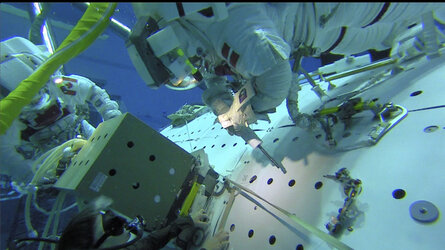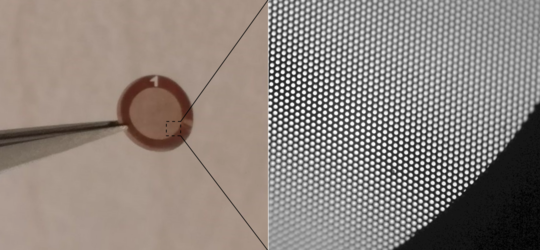Accept all cookies Accept only essential cookies See our Cookie Notice

About ESA
The European Space Agency (ESA) is Europe’s gateway to space. Its mission is to shape the development of Europe’s space capability and ensure that investment in space continues to deliver benefits to the citizens of Europe and the world.
Highlights
ESA - United space in Europe
This is ESA ESA facts Member States & Cooperating States Funding Director General Top management For Member State Delegations European vision European Space Policy ESA & EU Space Councils Responsibility & Sustainability Annual Report Calendar of meetings Corporate newsEstablishments & sites
ESA Headquarters ESA ESTEC ESA ESOC ESA ESRIN ESA EAC ESA ESAC Europe's Spaceport ESA ESEC ESA ECSAT Brussels Office Washington OfficeWorking with ESA
Business with ESA ESA Commercialisation Gateway Law at ESA Careers Cyber resilience at ESA IT at ESA Newsroom Partnerships Merchandising Licence Education Open Space Innovation Platform Integrity and Reporting Administrative Tribunal Health and SafetyMore about ESA
History ESA Historical Archives Exhibitions Publications Art & Culture ESA Merchandise Kids Diversity ESA Brand Centre ESA ChampionsLatest
Space in Member States
Find out more about space activities in our 23 Member States, and understand how ESA works together with their national agencies, institutions and organisations.
Science & Exploration
Exploring our Solar System and unlocking the secrets of the Universe
Go to topicAstronauts
Missions
Juice Euclid Webb Solar Orbiter BepiColombo Gaia ExoMars Cheops Exoplanet missions More missionsActivities
International Space Station Orion service module Gateway Concordia Caves & Pangaea BenefitsLatest
Space Safety
Protecting life and infrastructure on Earth and in orbit
Go to topicAsteroids
Asteroids and Planetary Defence Asteroid danger explained Flyeye telescope: asteroid detection Hera mission: asteroid deflection Near-Earth Object Coordination CentreSpace junk
About space debris Space debris by the numbers Space Environment Report In space refuelling, refurbishing and removingSafety from space
Clean Space ecodesign Zero Debris Technologies Space for Earth Supporting Sustainable DevelopmentApplications
Using space to benefit citizens and meet future challenges on Earth
Go to topicObserving the Earth
Observing the Earth Future EO Copernicus Meteorology Space for our climate Satellite missionsCommercialisation
ESA Commercialisation Gateway Open Space Innovation Platform Business Incubation ESA Space SolutionsEnabling & Support
Making space accessible and developing the technologies for the future
Go to topicBuilding missions
Space Engineering and Technology Test centre Laboratories Concurrent Design Facility Preparing for the future Shaping the Future Discovery and Preparation Advanced Concepts TeamSpace transportation
Space Transportation Ariane Vega Space Rider Future space transportation Boost! Europe's Spaceport Launches from Europe's Spaceport from 2012Latest

OneWeb user terminal on Sail for Tomorrow's boat "Odyssey"
Thank you for liking
You have already liked this page, you can only like it once!
To achieve truly global connectivity, telecommunications satellites are essential. Through the Sunrise Partnership Project with Eutelsat OneWeb – part of Eutelsat Group – and support from the UK Space Agency, ESA is extending advanced 5G connectivity to areas beyond the reach of traditional ground networks.
OneWeb's constellation consists of over 600 satellites orbiting at 1200 km above Earth, also known as low Earth orbit (LEO). Due to their proximity to Earth, these satellites can deliver high-speed, low-latency connectivity from pole to pole. To harness this global coverage, Eutelsat OneWeb offers user terminals (UTs) – often compact devices that act like antennas to connect to the satellite network, enabling internet service.
The UTs come in various sizes and can be installed on planes, ships, vehicles or buildings to provide strong and reliable connectivity to anyone, anywhere, even in the most remote areas. They also offer robust security protocols and resilience in extreme environments, making them particularly advantageous for organisations seeking their own private networks.
First steps: Arctic exploration and ocean research
To showcase the strength of this joint solution, ESA, Eutelsat OneWeb and the UK Space Agency have partnered with two exciting oceanic expeditions for the first demonstration of these user terminals.
One is the Sail for Tomorrow student expedition. The crew will spend the next 8 months venturing from France to Tahiti through the Panama Canal, conducting ocean research and participating in an educational program with a primary school in France. The UT on their ship “Odyssey”, manufactured by Intellian Technologies, will allow the team to share real-time marine research findings and video conference with the primary school students, bringing their exciting research directly into classrooms. Be sure to follow x.com/EsaTelecoms to get live updates from the Sail for Tomorrow crew!
The second demonstration is the Polar Pod expedition, led by renowned French explorer Dr Jean-Louis Étienne. Dr Étienne and his crew are in the process of building research facilities in the seas of the South and North Poles. These facilities, called Polar Pods, will be established in areas which have never before been studied over extended periods of time. They will research the exchange of CO2 between the air and sea, ocean salinity and circulation, the wellbeing of blue whales, and monitoring phytoplankton from space, microplastics and more.
The bespoke UT for this project has been installed on Dr Étienne’s supply ship "Perseverance" and has already been supporting their operations around the North Pole, with a South Pole expedition planned for 2026. With the UT, Perseverance can transfer large amounts of scientific data at high speeds. This connectivity is vital for efficient collaboration and ensuring the crew can communicate, especially in extreme Arctic and Antarctic conditions.
These expeditions exemplify how space technology can benefit scientific research on Earth, contributing to environmental protection and education of future generations. The reliable connectivity provided by the User Terminals ensures that valuable data from these remote locations can be transmitted and analysed in real-time without disruptions.
Future applications and potential
While these expeditions demonstrate specific connectivity use cases at sea, the potential for the satellite constellation to transform communications extends far beyond, from revolutionising disaster response efforts to telemedicine services and more. The business world stands to benefit significantly: airlines can offer uninterrupted in-flight connectivity, office buildings can establish secure private networks, trains can stay connected over long distances, and transport companies can maintain constant communication with ships at sea.
The satellite and user terminal technology represents a leap forward in our ability to connect and communicate globally. It opens possibilities for research, education and operations in areas previously inaccessible by terrestrial networks.
-
CREDIT
Image credits: Sail for Tomorrow -
LICENCE
ESA Standard Licence

ESA Euronews: Tomorrow’s weather

Satellite terminals on SA school

Showtime for ColKa

Graphene sail in microgravity















 Germany
Germany
 Austria
Austria
 Belgium
Belgium
 Denmark
Denmark
 Spain
Spain
 Estonia
Estonia
 Finland
Finland
 France
France
 Greece
Greece
 Hungary
Hungary
 Ireland
Ireland
 Italy
Italy
 Luxembourg
Luxembourg
 Norway
Norway
 The Netherlands
The Netherlands
 Poland
Poland
 Portugal
Portugal
 Czechia
Czechia
 Romania
Romania
 United Kingdom
United Kingdom
 Slovenia
Slovenia
 Sweden
Sweden
 Switzerland
Switzerland

























